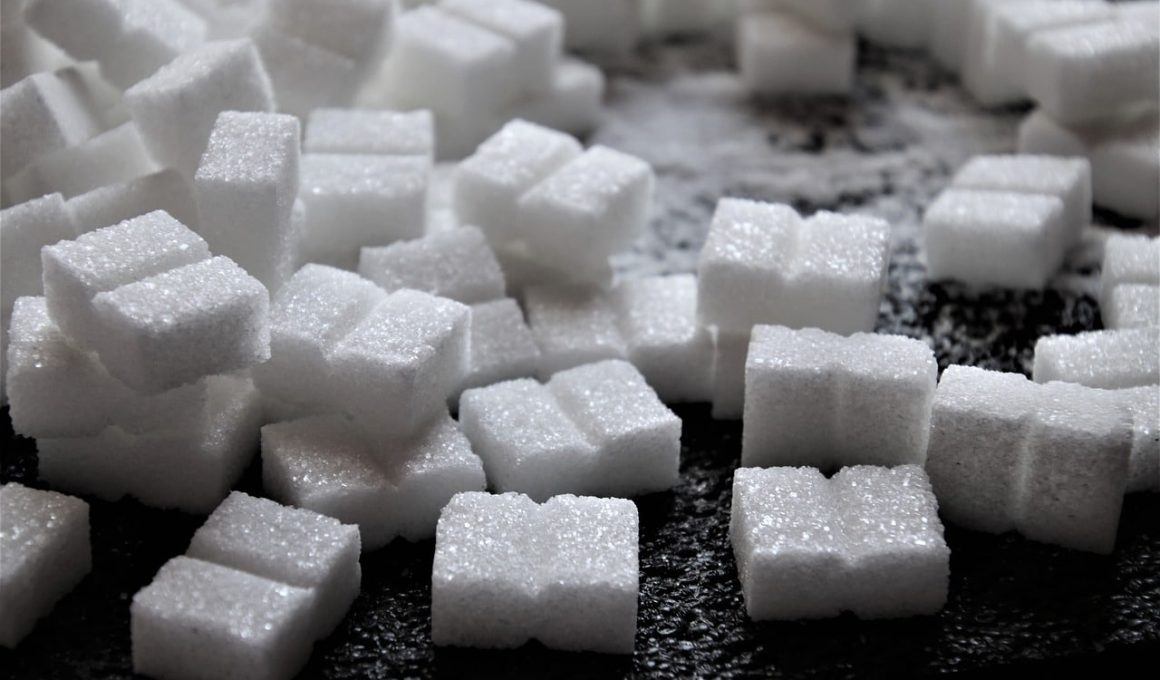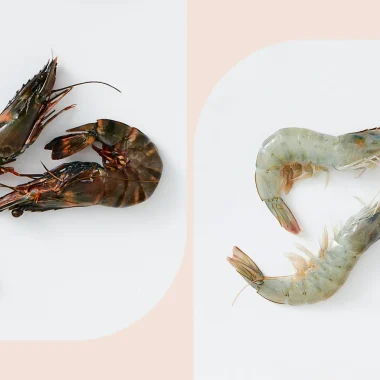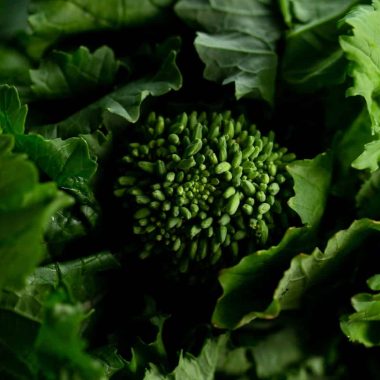If you’ve ever wondered about the caloric content of sugar, this section is for you.
Let’s start with the basics: what is sugar and the different types of sugar commonly used.
What Is Sugar?
Put sugar is a sweet-tasting substance that is used in many types of food and drink.
It is a carbohydrate type that provides energy to your body.
However, unlike other carbohydrates like fiber and starch, sugar is a simple carbohydrate that your body can quickly convert into energy.
When you’re counting calories, it’s crucial to know how many calories in sugar you’re consuming.
One gram of sugar contains approximately four calories.
But remember, these are empty calories, meaning they don’t provide any nutritional value beyond energy.
If you’re interested in learning more about calorie counting, you might find our article on what is calorie counting helpful.
Different Types of Sugar
There are many different types of sugar, each with its own characteristics and caloric content.
Here are four common types of sugar:
- White sugar (Sucrose): This is the most common type of sugar, often used in baking and to sweeten drinks. It has about four calories per gram.
- Brown sugar: Brown sugar is white sugar with molasses added to it, which gives it its color and a slightly different flavor. It also has around four calories per gram.
- Honey: Although not technically a sugar, honey is a sweetener that many people use as a sugar substitute. Honey has about three calories per gram.
- Agave nectar: Like honey, agave nectar is a sweetener that is often used as a sugar substitute. It has about three calories per gram.
| Type of Sugar | Calories Per Gram |
|---|---|
| White Sugar | 4 |
| Brown Sugar | 4 |
| Honey | 3 |
| Agave Nectar | 3 |
Remember, while these sugars may taste different, they all contain calories.
So, when you’re counting calories, make sure to account for any sugar you add to your food or drinks.
If you want to know more about the calories in other foods, check out our articles on how many calories in fried chicken or how many calories in rice.
Nutritional Facts About Sugar
To better understand the impact of sugar on your diet, it’s essential to look at the nutritional facts.
We’ll cover both the caloric content of sugar and how sugar compares to other sweeteners.
Caloric Content of Sugar
One teaspoon of granulated sugar contains about 16 calories. It’s essential to note that these calories come entirely from carbohydrates, as sugar lacks protein, fat, and fiber.
Here’s a breakdown of the caloric content of some of the most common types of sugar:
| Type of Sugar | Calories per Teaspoon |
|---|---|
| White Granulated Sugar | 16 |
| Brown Sugar | 17 |
| Powdered Sugar | 10 |
| Raw Sugar | 15 |
While these numbers may seem small, remember that they can quickly add up, especially when you consider how much sugar is found in many foods and beverages you consume daily.
If you’re curious about the calorie content in various foods, check out our articles on topics ranging from how many calories in two scrambled eggs to how many calories in rice.
Sugar Compared to Other Sweeteners
You may be wondering how sugar stacks up against other sweeteners in terms of caloric content. Here’s a comparison:
| Type of Sweetener | Calories per Teaspoon |
|---|---|
| Honey | 21 |
| Maple Syrup | 17 |
| Agave Nectar | 20 |
| Stevia | 0 |
While some sweeteners like honey and maple syrup contain more calories than sugar, they also provide additional nutrients and may impact your blood sugar levels differently.
On the other hand, zero-calorie sweeteners like stevia can be a good option if you’re trying to cut down on your calorie intake, but it’s important to use them in moderation.
Remember, the key to a healthy diet is balance. While it’s okay to enjoy sugary treats in moderation, it’s also important to be aware of your sugar intake and consider healthier alternatives when possible.
Check out our article on how many calories in diet coke for an example of a lower-calorie beverage choice.
Impact of Sugar on Your Health
When it comes to your health, understanding the impact of sugar is crucial—especially if you’re concerned about how many calories in sugar contribute to your daily intake.
This section will explore its potential effects on weight gain and metabolic syndrome.
Sugar and Weight Gain
Sugar, particularly the kind found in processed foods and sweetened beverages, is high in calories.
When you consume more calories than your body can burn, excess is stored as fat, leading to weight gain.
To put it in perspective, one teaspoon of sugar contains about 16 calories.
Now, consider the amount of sugar in some of your favorite snacks or drinks.
It can add up quickly, can’t it? For a more comprehensive understanding of calories in various foods, check out our articles, such as how many calories in fried chicken, how many calories in pizza, or how many calories in rice.
Moreover, foods high in sugar often lack essential nutrients, leading to what’s known as “empty calories.”
This means you’re not getting the necessary vitamins and minerals your body needs to function properly, which can lead to malnutrition over time, even if you’re consuming plenty of calories.
| Food / Drink | Calories | Sugar (grams) |
|---|---|---|
| 1 teaspoon of sugar | 16 | 4 |
| 1 can of soda | 150 | 39 |
| 1 candy bar | 200+ | 30+ |
Sugar and Metabolic Syndrome
Beyond weight gain, high sugar intake is linked to metabolic syndrome—a cluster of conditions that include increased blood pressure, high blood sugar, excess body fat around the waist, and abnormal cholesterol or triglyceride levels.
When you consume too much sugar, your body must work harder to check your blood sugar levels.
Over time, this can lead to insulin resistance, a key factor in developing metabolic syndrome.
Additionally, high sugar intake can lead to inflammation in your body.
Chronic inflammation is associated with many health problems, including heart disease, diabetes, and obesity.
Remember, understanding the caloric content of sugar is just the first step.
It’s also important to consider the overall nutritional value of your food.
For instance, how many calories in two eggs might be the same as in a candy bar, but eggs also provide protein, vitamins, and minerals.
Always aim for a balanced diet and remember to enjoy sweet treats in moderation.
How to Measure Sugar Intake
Keeping track of how much sugar you’re consuming can be a game-changer for your health and wellbeing.
Understanding food labels and calculating your daily sugar intake are crucial steps in this process.
Understanding Food Labels
Food labels can be a great tool for understanding how much sugar is in your foods and drinks.
When you look at a food label, you’ll see a line for sugars, usually listed in grams.
Remember, the listed sugar content includes both natural sugars, like those found in fruits and milk, and added sugars, which are added during processing.
If you’re monitoring your sugar intake, it’s the added sugars you need to watch out for.
Let’s say a food label shows that there are 15 grams of sugar in a serving.
Since we know that there are 4 calories in a gram of sugar, this translates to 60 calories from sugar in that serving.
This simple calculation can be a real eye-opener when you’re trying to figure out how many calories in sugar you’re consuming.
To help you understand how this works in different foods, here’s a handy table:
| Food | Sugar per serving (g) | Calories from sugar |
|---|---|---|
| Soda (1 can) | 39 | 156 |
| Fruit yogurt (1 cup) | 19 | 76 |
| Chocolate bar (1 bar) | 30 | 120 |
Calculating Daily Sugar Intake
As a general guideline, the American Heart Association recommends that women limit their intake of added sugars to no more than 6 teaspoons (about 24 grams or 96 calories) per day.
In comparison, men should limit their intake to no more than 9 teaspoons (about 36 grams or 144 calories) per day.
To calculate your daily sugar intake in calories, multiply the grams of sugar you’ve consumed by 4.
For example, if you’ve consumed 30 grams of sugar in a day, that’s 120 calories from sugar.
Keep in mind that these are guidelines, and individual needs can vary based on factors like age, physical activity level, and overall health.
If you’re unsure about how much sugar you should consume, consulting a healthcare professional or a registered dietitian can be helpful.
Knowing how many calories in sugar you’re consuming can help you make healthier food choices and stay within your daily calorie goals.
By understanding food labels and calculating your daily sugar intake, you can take control of your sugar consumption and improve your overall diet.
Don’t forget to check out our other articles on calorie content in various foods, like how many calories in fried chicken or how many calories in pizza, to help you make well-informed dietary decisions.
Tips to Reduce Sugar Intake
If you’re wondering about how many calories in sugar and how to reduce your intake, you’re in the right place.
It’s important to understand that sugar can add extra calories to your diet, and cutting back can help in maintaining a balanced diet.
Healthy Alternatives to Sugar
There are several healthier alternatives to table sugar that you can consider.
These alternatives can give your food the sweetness you desire without the extra calories that come with sugar.
- Stevia: A zero-calorie sweetener derived from the leaves of the stevia plant. It’s much sweeter than sugar, so you’ll need less of it to achieve the same level of sweetness.
- Erythritol: A type of sugar alcohol that tastes almost as sweet as sugar but contains fewer calories.
- Yacon Syrup: Made from the root of the yacon plant, this sweetener is high in fructooligosaccharides, which feed the good bacteria in your gut.
- Monk Fruit Sweetener: Derived from monk fruit, this sweetener is 100-250 times sweeter than sugar but has zero calories.
| Sweetener | Calories per Tablespoon |
|---|---|
| Sugar | 48 |
| Stevia | 0 |
| Erythritol | 6 |
| Yacon Syrup | 39 |
| Monk Fruit Sweetener | 0 |
Remember, while these alternatives may contain fewer calories, they should still be consumed in moderation as part of a balanced diet.
How to Gradually Cut Down Sugar Consumption
Reducing sugar intake doesn’t have to be a daunting task. Here are some simple steps to gradually cut down your sugar consumption:
- Read Food Labels: Many packaged foods contain added sugars. You can choose options with less or no added sugars by learning to read food labels.
- Reduce Sugar in Recipes: When cooking or baking at home, try reducing the amount of sugar in your recipes. Often, you can cut the sugar content by up to a third without significantly altering the taste.
- Choose Natural Sweeteners: Opt for fruits, dates, or honey to sweeten your foods instead of using table sugar or artificial sweeteners.
- Limit Sweetened Beverages: Sodas, juices, and other sweetened beverages can add significant sugar to your diet. Opt for water, unsweetened tea, or fruit-infused water instead.
- Eat Whole Foods: Whole foods like fruits, vegetables, and whole grains are naturally low in sugar and high in fiber, making them a healthy choice.
Reducing your sugar intake can have a positive impact on your overall health.
By making small changes to your diet, you can cut down on sugar and enjoy a healthier lifestyle.
For more tips on calorie counting, check out our article on what is calorie counting.









